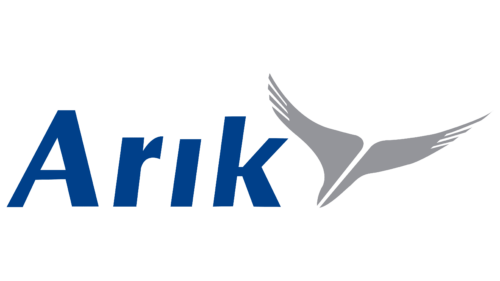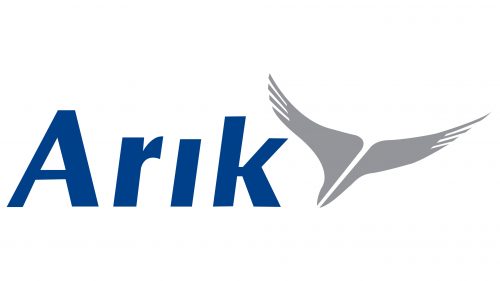Arik Air’s logo speaks of growth and ambition. Starting with a single airplane, the airline today covers ever greater distances. It tells the story of flight, just like the stylized bird on its logo. It doesn’t need buzzwords; it’s all about connecting places and people to make the world a little smaller.
Arik Air: Brand overview
Nigerian businessman Sir Joseph Arumemi-Ikhide bought the assets of the national airline, Nigeria Airways, which was in bankruptcy in 2002, marking the beginning of Arik Air’s history. His goal was to establish a new airline for Nigeria, aiming to become the nation’s cutting-edge flagship carrier.
Much work went into setting up the new airline’s infrastructure in 2004 and 2005. The team led by Arumemi-Ikhide concentrated on securing licenses and permits from the aviation authorities in Nigeria. Concurrently, talks were held with aircraft manufacturers and leasing businesses to establish the first fleet.
The company was formally registered on April 14, 2006. The founder’s name, Arumemi-Ikhide, was shortened to “Arik.” In the ensuing months, the business actively prepared for operations by appointing personnel, educating crews, and setting up operational protocols.
The airline used a Boeing 737-300 to carry out its inaugural commercial flight from Lagos to Abuja on October 30, 2006. This signaled the start of a new era in Nigerian aviation, with the airline first connecting the country’s biggest cities on important domestic routes.
The company increased the number of its domestic routes in 2007 and began offering flights to most of the country’s major cities, including Port Harcourt, Calabar, Enugu, and Kano. The airline invested in Nigerian airport infrastructure upgrades to raise the caliber of passenger service.
The airline started operating international flights in 2008, with Accra, Ghana, as the initial destination. This growth furthered the company’s goals to become a top carrier in West Africa and Nigeria.
The business maintained aggressive growth in 2009 when it began operating flights to London Heathrow. This noteworthy achievement gave Nigeria access to one of the world’s principal financial hubs. The airline was able to arrange long-haul flights when it obtained its first wide-body aircraft, an Airbus A340-500, that same year.
2010 saw the company enhance its standing among African carriers by adding flights to Johannesburg, South Africa, expanding its international network. The firm started operating regular flights to New York JFK in August 2010, making it the first Nigerian airline authorized to go to the United States.
The company’s 2011 priorities were growing its fleet and enhancing service quality. The airline improved its route network and increased operating efficiency by delivering many new aircraft, including Bombardier CRJ900 and Boeing 737-800.
The airline carried its ten millionth passenger in 2012, a momentous occasion that underscored its swift expansion and ubiquity among Nigerian tourists. Additionally, the company began offering flights to Dakar, Senegal, Banjul, and Gambia, further increasing its footprint in West Africa.
The airline maintained its leadership in the Nigerian market in 2013 and 2014 by investing in employee training and ground infrastructure upgrades. However, the business encountered operational difficulties during this time, such as financial difficulties and flight delays.
Notwithstanding these difficulties, the company operated important domestic and international routes in 2015 and was still Nigeria’s biggest airline. In an extremely competitive market, the firm revamped its loyalty program that same year to keep frequent travelers.
The airline experienced serious financial problems in 2016. It racked up large debts from fuel suppliers and airport services, which caused repeated delays and cancellations that damaged its reputation.
The Nigerian government became involved in the airline’s operations in February 2017. The company entered a new phase comprising restructuring and attempts to restore financial stability when the Asset Management Corporation of Nigeria (AMCON) took over the airline’s administration to stabilize its financial condition and guarantee continuing operations.
Following AMCON’s acquisition of the company in 2018, the business started a thorough restructuring. The main priorities were reducing operating expenses and streamlining the route network. The airline focused on the most lucrative flights inside Nigeria and West Africa, reducing the number of locations it served. Despite financial difficulties, the company kept a sizable portion of the domestic market, particularly on important routes connecting Lagos, Abuja, and Port Harcourt.
2019 saw the airline enhance its financial results and settle debt restructuring agreements with creditors. The business has revised its maintenance schedule to improve fleet dependability and lower technical delays. In the middle of the year, the airline revealed that it would start up some of the foreign routes it had previously halted, a sign of improving finances over time. The company started programs to increase flight punctuality and invested in employee training.
Early in 2020, the company pursued financial stability while pursuing funding agreements with possible backers to update the fleet and grow the business. The firm declared that it would update its aircraft fleet to lower maintenance costs and increase operating efficiency. New narrow-body aircraft would be acquired to replace the older Boeing 737s. In addition to adding new destinations and boosting flight frequencies on its current routes, the airline strengthened its position in the business travel market by providing improved services to corporate customers throughout the year.
The company resumed its reorganization in 2021 while being run by AMCON, emphasizing enhancing financial performance and operational effectiveness. The firm revealed intentions to rebrand and modernize its marketing approach to regain its reputation as Nigeria’s top airline and attract more customers. The airline expanded its online presence by improving online services and using new technology to expedite the booking and check-in procedures. Towards the end of 2021, the company gradually recovered despite persistent difficulties in the competitive Nigerian aviation industry.
Meaning and History
What is Arik Air?
Arik Air is a key player in the Nigerian aviation industry, operating from two major hubs – Murtala Muhammed International Airport in Lagos and Nnamdi Azikiwe International Airport in Abuja. Established in 2002, the airline is the result of efforts to revitalize the country’s aviation sector. The airline filled the void left by the discontinuation of Nigeria Airways. Arik Air currently serves a wide network of domestic and regional routes, including flights to key cities in North America, Europe, and Africa.
2006 – today
Arik Air’s logo features a bird, as the airline associates itself with this creature. The bird covers a large area, flying long and short distances, and its airplanes consistently perform well in the air. The bird is abstract and composed of two separate halves, which creates a sense of continuous support. It hovers like a shadow, spreading its gray wings wide. Strength and reliability emanate from the figure. On the left is the name of the Nigerian company, written in block letters and colored in ultramarine blue.
The choice of the abstract bird symbolizes the company’s versatility and adaptability. The gray color of the bird suggests a balanced, neutral stance, effectively combining accessibility and professionalism. The block lettering of the company name gives the logo stability, while the ultramarine blue color emphasizes the airline’s commitment to quality and service.
FAQ
What is the IATA code for Arik Air?
A well-known aviation company from Nigeria uses the IATA code W3. This code helps airports and air traffic controllers worldwide recognize the company during flight planning, booking, and ticket sales. The company operates under the ICAO code ARA for specific operations such as air traffic control.
Is Arik Air in mma1 or MMA2?
The company operates from the General Aviation Terminal (GAT) and Murtala Muhammed Airport Terminal 2 (MMA2) in Lagos, Nigeria. Both terminals serve domestic flights. As one of Nigeria’s leading domestic airlines, the company shares these terminals with Air Peace, catering to many travelers. GAT and MMA2 are well-equipped to handle heavy passenger traffic.
Which country owns Arik Air?
Nigeria owns the company and primarily operates domestically. Its main hubs are the Murtala Muhammed International Airport in Lagos and the Nnamdi Azikiwe International Airport in Abuja. These locations help manage flights within Nigeria and to other destinations efficiently.
Is Arik Air still operating?
Currently operational, flights between Abuja, Sokoto, and Kano have resumed on September 3, 2021. The company offers flights from Abuja to Sokoto and from Abuja to Kano three times a week on Tuesdays, Thursdays, and Saturdays. This schedule allows travelers from Lagos to reach Sokoto and Kano via Abuja easily. As Nigeria’s leading airline, it is committed to expanding its network and providing essential air services to meet the needs of its passengers.
How many aircraft does Arik have?
The company is a Nigerian airline with a fleet of 14 aircraft. It operates primarily from Lagos Murtala Muhammed International Airport and has bases in Abuja and Accra. The planes are, on average, 16.4 years old, suggesting they are older models. The airline flies to various destinations in West Africa and beyond, making it an important part of air travel in the region.





